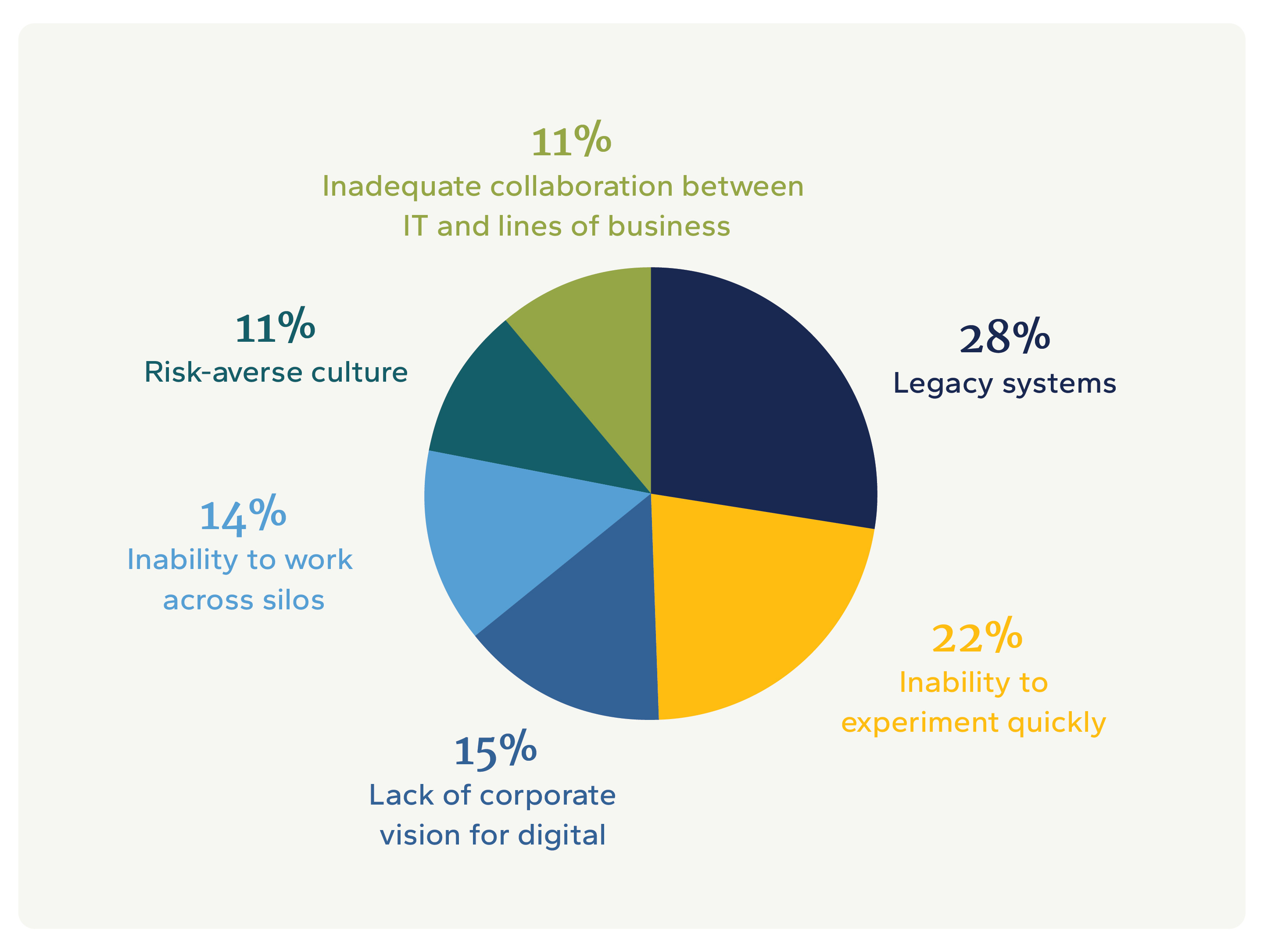Key Takeaways
- To succeed in digital transformation, organizations must take a holistic approach and align the entire organization around strategic vision and execution.
- Being intentional and collaborative is key to understanding where you are, where you want to go, and how you’ll arrive.
- A vision and strategy workshop can help you understand your current environment, focus on top opportunities, and develop an action plan.
Gartner has categorized technology investment into three segments: run, grow, and transform. According to their research, over 87% of corporate IT spend is allocated to ‘run’ and ‘grow.’ Less than 13% of budgets are spent on ‘transform.”
Technology can provide solutions to help you navigate today’s top challenges: competitive pressure, hiring and retention, and value-chain demands. On average, a small to medium-sized organization has over 120 business applications and services, while large organizations can have three to four times that amount.
This is often a result of organizations making incremental improvements to solve one business challenge rather than focusing on a transformation strategy. Transformation initiatives are high-risk and high-reward, carrying the potential to substantially accelerate business growth. For a successful transformation, it’s imperative to slow down and develop a strategic vision and execution plan.
Building a Strategic Vision and Execution Plan
When it comes to digital transformation, being intentional is key to understanding where you are, where you want to go, and how you’ll arrive there. This requires input from across your organization — not just key stakeholders. To run an effective strategy workshop, we recommend that you spend one full day with members of your organization collaborating on a three-step process.
Step One: Understand Your Current Environment
The first step to developing your strategy is understanding the current environment. Consider the following:
- What’s happening in your industry?
- What are your competitive pressures?
- What does innovation look like in your industry?
- What are your organization’s pain points?
- What’s working well in your organization? What isn’t?
- What are people excited about?
Step Two: Focus on Top Opportunities
This step isn’t about identifying limitations or solving problems but about what’s possible.
- Where do you want your organization to be in three to six years?
- What are the top opportunities for your organization?
- What does this big picture look like?
Step Three: Develop an Action Plan
Once your team has identified transformational items and brainstormed, refined, and prioritized those opportunities, identify what process and technology improvements are needed to achieve your goals.
Learn more about what can happen when you slow down to go faster.
Barriers to Success in Digital Transformation
A study from HBR reports that executives’ top ten barriers to a successful digital transformation in their organizations are:
- Inability to experiment quickly
- Change management capabilities
- Legacy systems
- Lack of corporate vision for digital
- Inability to work across silos
- Lack of talent/skills required
- Inadequate collaboration between IT and lines of business
- Insufficient budget
- Risk-averse culture
- Cybersecurity
Half of these barriers can be attributed to organizational cultural or procedural issues, showcasing the importance of planning for change management and creating a culture of innovation.
Our survey of executives found that out of these top ten barriers, the most significant are legacy systems, inability to experiment quickly, a lack of corporate vision for digital, an inability to work across silos, a risk-averse culture, and inadequate collaboration between IT and lines of business.

Organizations must take a holistic approach to digital transformation to overcome these barriers. Aligning your entire organization around a strategic vision and execution plan can help.
Vision and Strategy Workshop
If you’d like help creating a plan to lay the groundwork for digital transformation, we can help. Our team facilitates vision and strategy workshops to support your digital transformation initiatives, help with the development and implementation of business process improvements, and support your plan’s execution. At Eide Bailly, we’ve helped hundreds of organizations transform their people, processes, and technology to achieve digital-focused success.
The Business Case for Slowing Down to Go Faster

Strategy and Digital Future
Create a lasting digital future for your organization.


